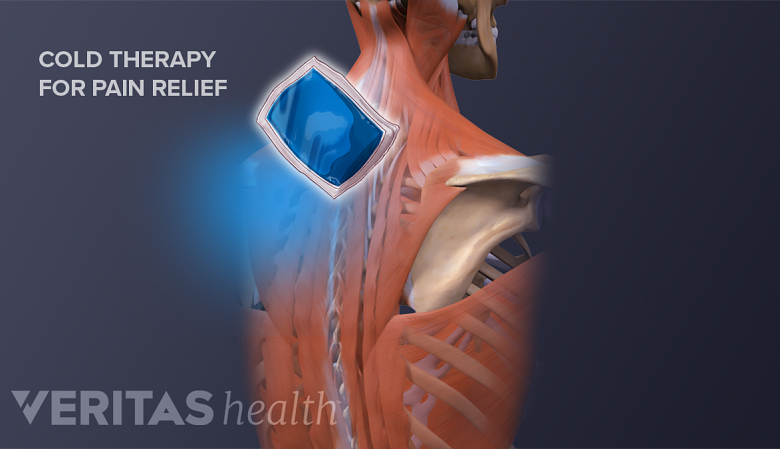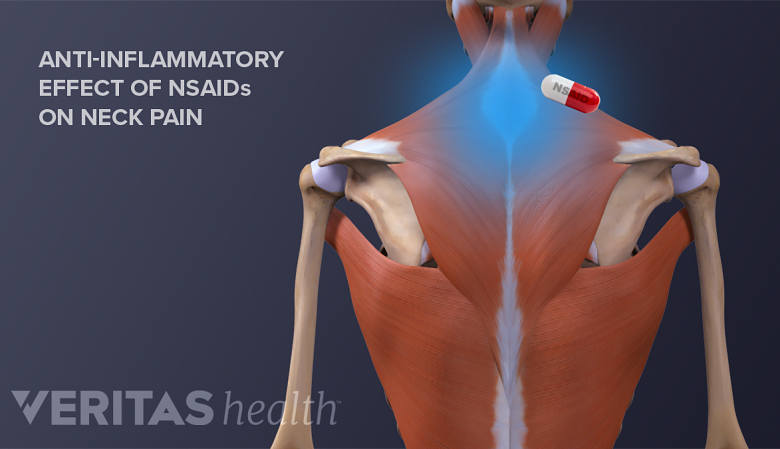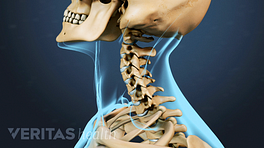Self-care is commonly a regular part of a comprehensive treatment plan for neck pain and stiffness that has lasted or kept returning for at least 3 months. This page focuses on some of the more common self-care treatments for managing chronic neck pain and stiffness.
In This Article:
Neck Stretches and Exercises
For acute or severe neck stiffness, it is likely that only gentle range-of-motion stretches can be completed in a few directions without exacerbating the pain. More vigorous activities or exercises are not advised if they increase pain levels.
See 4 Easy Stretches for a Stiff Neck
In cases where neck pain and stiffness have become chronic, it may help to have a daily routine of neck exercises and stretches to keep the neck strong and flexible, which may help reduce pain and improve function. When starting neck exercises or stretches, it is normal for the neck to have some increased swelling and/or discomfort afterward, but the exercises should not increase pain while being performed.
Heat Therapy
Heat therapy helps ease pain, relax muscles, and promote healing.
For chronic neck pain and stiffness, applying heat therapy can be a relatively inexpensive and convenient way to get some relief. A heat therapy application dilates local blood vessels and increases blood flow, which may improve blood circulation in the painful or stiff area. Heat therapy can warm up muscles and other soft tissues, increasing flexibility, and reducing muscle tightness.
Some examples of heat therapy include:
- Warm shower or bath
- Heat pack, such as a gel pack or heat wrap
- Heating pad
- Warm, damp cloth or towel
A heat therapy application can last for varying amounts of time, depending on the amount of pain relief experienced. Some people may find that applications of 10 to 20 minutes suffice, whereas others might prefer heat therapy for a longer period, such as 1 or 2 hours.
It is important to avoid lying directly on the heat pad or heating source as this can lead to skin damage, burns and permanent discoloration. Whenever applying heat packs or heating pads, follow directions carefully and regularly check the skin. People with medical conditions that cause skin insensitivity, such as diabetes, must be extra careful to avoid skin damage when applying heat or ice therapy.
Cold Therapy
Cold therapy reduces inflammation by constricting blood vessels and reducing blood flow.
Applying ice is typically more common with acute injuries, such as muscle strains that have happened within the past 24 to 48 hours. Cold therapy can constrict local blood vessels and reduce blood flow, which might help reduce swelling during the first couple of days after an injury.
Even though cold therapy may be more beneficial for reducing swelling from an acute injury, some patients still prefer cold therapy as a treatment option for chronic pain and stiffness. When applying an ice pack or other forms of cold therapy, applications are limited to 15 to 20 minutes at a time with at least 2 hours of rest between application to avoid skin damage. Some people find it helpful to alternate between cold therapy and heat therapy.
Over-the-Counter Pain Medication
NSAIDs aid in pain relief by reducing inflammation.
Various over-the-counter pain medications are available. Some examples include acetaminophen (Tylenol) or nonsteroidal anti-inflammatory drugs (NSAIDs), such as ibuprofen (Advil) and naproxen (Aleve).
See Medications for Back Pain and Neck Pain
Over-the-counter medications are available without a prescription, but they still have risks. It is important to read warning labels on over-the-counter medications and follow directions carefully to reduce the risks of overdose, stomach bleeding, or other serious complications. Over-the-counter medications may also interact with other medications taken as part of a prescription for a different health condition and may pose a significant risk for certain diagnoses. When there is a concern, check with a physician.
Efficacy of Self-Care to Treat Chronic Stiff Neck
The medical literature is mixed regarding whether self-care treatments can reduce pain and improve function for a chronic stiff neck. While some patients have reported pain relief from various self-care treatments, most of the benefits appear to be temporary. 1 Haldeman S, Carroll L, Cassidy JD, Schubert J, Nygren A. The Bone and Joint Decade 2000-2010 Task Force on Neck Pain and Its Associated Disorders: executive summary. Spine. 2008;33(4 Suppl):S5-7. For treating chronic spinal pain, such as in the neck or back, a current review of the medical literature indicates that exercises and stretches may be the self-care treatment option that offers the longest-lasting relief and improved function. 2 Babatunde OO, Jordan JL, Van der windt DA, Hill JC, Foster NE, Protheroe J. Effective treatment options for musculoskeletal pain in primary care: A systematic overview of current evidence. PLoS ONE. 2017;12(6):e0178621. , 3 Bertozzi L, Gardenghi I, Turoni F, et al. Effect of therapeutic exercise on pain and disability in the management of chronic nonspecific neck pain: systematic review and meta-analysis of randomized trials. Phys Ther. 2013; 93(8):1026-36.
Some people may also experience even more benefits by combining multiple treatments. No two people have the exact same preferences for self-care treatments for a chronic neck pain and stiffness.
When Self-Care Is Not Enough for Chronic Stiff Neck
If self-care treatments do not provide enough pain relief and improved function to make it comfortably through daily tasks, other treatments options may be needed.
- 1 Haldeman S, Carroll L, Cassidy JD, Schubert J, Nygren A. The Bone and Joint Decade 2000-2010 Task Force on Neck Pain and Its Associated Disorders: executive summary. Spine. 2008;33(4 Suppl):S5-7.
- 2 Babatunde OO, Jordan JL, Van der windt DA, Hill JC, Foster NE, Protheroe J. Effective treatment options for musculoskeletal pain in primary care: A systematic overview of current evidence. PLoS ONE. 2017;12(6):e0178621.
- 3 Bertozzi L, Gardenghi I, Turoni F, et al. Effect of therapeutic exercise on pain and disability in the management of chronic nonspecific neck pain: systematic review and meta-analysis of randomized trials. Phys Ther. 2013; 93(8):1026-36.















